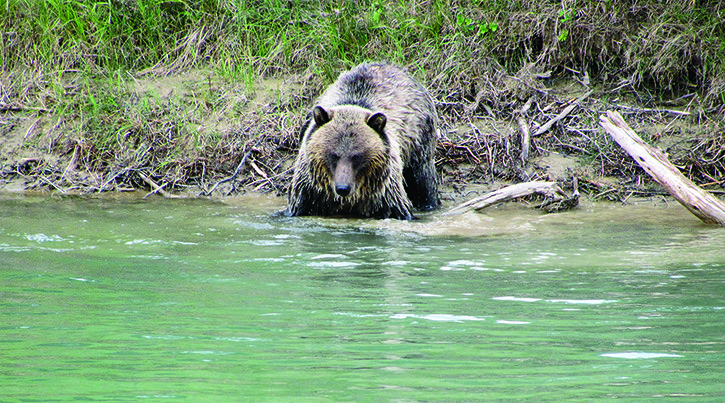The Elk Valley, located to the southeast of the Columbia Valley, has developed into an “ecological trap” for grizzly bears due to an influx of human-wildlife conflicts in the area, said PhD candidate at the University of Alberta Clayton Lamb.
“In the last eight years, we’ve lost 40 per cent of our grizzly bears in that area — that’s not normal,” Lamb told Mark Hume of the Globe and Mail last week. When asked by The Echo about his bar for normal mortality rates, Lamb compared mortality rates in the valley to the broader provincial perspective.
“Provincially, the populations that we’re studying, none of them that we are documenting are showing that type of decline,” he said. “It’s not normal as far as what we have across the landscape right now where we’re studying.”
Lamb is the lead author of a study on grizzly bear populations in the Elk Valley that was originated by the province of British Columbia in 2006 with co-authors Garth Mowat and Bruce McLellan of B.C Ministry of Forests, before Lamb joined the team in 2013 as a Master’s student.
Lamb said they initially started the study to analyze grizzly bear populations, breaking the Elk Valley into different sections, to determine study grizzly bear demography and the impact human populations has on it.
What they found was that an area that previously had one of the highest grizzly bear densities across North America showed a rapid decline in population due to human activity. His research indicates that 68 per cent of grizzly bear deaths in the area come from non-hunting related incidents such as collisions with vehicles and trains, which account for 54 per cent of grizzly deaths while poaching accounted for only 13 per cent of grizzly mortalities.
Notably, 33 per cent of bear deaths were due to human-bear conflicts such as animals searching for food and were thus shot by ranchers or euthanized by conservation officers. Lamb said that unlike the mortality rates caused by hunting that can be reversed with the flip of the switch, these human-wildlife conflict rates are harder to control.
“I’m in Elkford and we’ve had a number of mortalities since I’ve been here and they’ve been all non-hunting and they’ve been conflicts with people due to livestock, pigs, chickens, and actually just the other day we had a bear hit by a train and so you have things like that that make you wonder either, how do you convince a land owner (not to kill the animal) or how do you convince a bear not to stand on the railway?” he said. “You can’t just turn off collisions like that.”
Lamb said that the Elk Valley provides a suitable habitat for grizzly bear populations thanks to its rich berry crops but when combined with high mortality rates caused by human-conflict, this can cause other bears from backcountry areas to refill these populations. Although he hasn’t studied the Columbia Valley exclusively, he said he expects to see similar patterns with the human presence so closely intertwined with wildlife like bears.
Lamb said that he hopes this study is able to shed light on a previously undocumented area in grizzly bear demography throughout the future.
“If this was happening without monitoring, it would have happened under our nose likely and we wouldn’t have known it,” he said. “That’s exciting in that we can monitor these types of populations that could be suffering high mortality rates.
